Traffic lights
Traffic lights represent critical urban infrastructure that manages vehicle and pedestrian flow through intersections, crosswalks, and complex traffic patterns. Modern LED-based traffic signal systems combine advanced lighting technology with intelligent control systems to provide reliable, energy-efficient traffic management for cities and municipalities worldwide.
Core Technical Specifications
LED Light Module Performance
- Light source: High-intensity LED arrays with focused optics
- Luminous intensity: 150-400 candela per color specification
- Color wavelength: Red (625nm), Yellow (590nm), Green (505nm)
- Viewing angle: 15-30 degrees for optimal visibility
- Operating voltage: 85-265V AC or 12/24V DC options
- Power consumption: 8-15 watts per module (vs 150W incandescent)
Environmental Protection and Durability
- Housing material: Die-cast aluminum with powder coating
- Lens material: Polycarbonate with UV stabilization
- Ingress protection: IP65/IP66 rating for complete weather sealing
- Operating temperature: -40°C to +74°C ambient conditions
- Vibration resistance: Meets transportation department standards
- Expected service life: 100,000+ hours for LED modules
Advanced Traffic Management Integration
Modern traffic lights incorporate intelligent control systems that respond to real-time traffic conditions, emergency vehicle priority, and pedestrian demand. These smart systems optimize traffic flow while maintaining safety standards through proven engineering principles.
Smart Control Features:
- Adaptive signal timing based on traffic volume detection
- Emergency vehicle preemption and priority control
- Pedestrian countdown timers and accessible audio signals
- Wireless communication for coordinated corridor management
- Remote monitoring and fault reporting capabilities
- Integration with traffic management center systems
Municipal and Urban Applications
Intersection Traffic Control
Primary applications involve managing vehicle movements through complex intersections where multiple traffic streams converge. Traffic lights provide clear, universally understood signals that regulate right-of-way assignment and prevent conflicts between competing traffic movements.
Intersection Control Benefits:
- Significant reduction in severe traffic accidents
- Improved traffic flow capacity through timed coordination
- Clear right-of-way assignment eliminates driver uncertainty
- Protection for vulnerable road users including pedestrians and cyclists
- Consistent operation during varying visibility conditions
- Integration with emergency services for rapid response
Pedestrian Crossing Protection
Dedicated pedestrian signal systems protect foot traffic at marked crosswalks and school zones. These specialized traffic lights often include countdown timers, audible signals for visually impaired users, and extended crossing times for elderly or mobility-impaired pedestrians.
Pedestrian Safety Features:
- Push-button activation with immediate or scheduled response
- Countdown displays show remaining crossing time
- Audible and tactile signals for accessibility compliance
- Extended crossing times accommodate varying walking speeds
- High-visibility LED arrays ensure driver awareness
- Integration with school zone speed control systems
Construction Zone and Temporary Installation
Portable traffic lights provide temporary traffic control during construction projects, utility work, and special events. These mobile systems maintain traffic flow while protecting workers and managing single-lane operations.
Temporary Control Applications:
- Construction zone traffic management and worker protection
- Utility maintenance operations on busy roadways
- Special event traffic routing and crowd control
- Emergency detour management during incidents
- Seasonal road maintenance and repair operations
- Bridge and tunnel maintenance traffic control
Safety Standards and Regulatory Compliance
Transportation Department Specifications
All traffic signal installations must comply with strict federal and local transportation standards that govern visibility, timing, placement, and operational characteristics. These regulations ensure consistent performance and driver expectations across different jurisdictions.
Regulatory Compliance Requirements:
- Manual on Uniform Traffic Control Devices (MUTCD) compliance
- Institute of Transportation Engineers (ITE) standards adherence
- Americans with Disabilities Act (ADA) accessibility requirements
- Federal Highway Administration (FHWA) approval specifications
- Local transportation department installation standards
- Electrical safety codes and installation requirements
Visibility and Optical Performance Standards
Precise optical specifications ensure traffic lights remain visible under various environmental conditions including direct sunlight, rain, fog, and nighttime operations. Standardized light output and color specifications provide consistent driver recognition.
Optical Performance Criteria:
- Minimum luminous intensity requirements for daytime visibility
- Color chromaticity coordinates within specified tolerances
- Phantom effect elimination through proper lens design
- Sun phantom reduction through optical engineering
- Uniform light distribution across viewing angle
- Color recognition standards for colorblind drivers
Installation and Infrastructure Requirements
Structural Support and Mounting Systems
Traffic lights require robust mounting systems that withstand wind loads, vehicle impact, and long-term environmental exposure. Proper structural design ensures reliable operation while minimizing maintenance requirements.
Infrastructure Components:
- Signal poles designed for wind load and impact resistance
- Underground conduit systems for power and communication cables
- Controller cabinets with environmental protection and security
- Emergency backup power systems for critical intersections
- Grounding systems for electrical safety and lightning protection
- Mounting hardware rated for seismic and extreme weather conditions
Electrical Systems and Power Requirements
Professional electrical installation ensures reliable operation while meeting safety codes and utility requirements. Power system design must accommodate various operational modes and emergency backup capabilities.
Electrical Installation Requirements:
- Dedicated electrical service with appropriate overcurrent protection
- Emergency backup power through UPS or generator systems
- Proper grounding for safety and equipment protection
- Surge protection for lightning and utility transient protection
- Communication cabling for central monitoring systems
- Compliance with National Electrical Code requirements
Technology Evolution and Smart City Integration
Connected Infrastructure and Data Analytics
Modern traffic lights increasingly integrate with broader smart city initiatives, providing traffic data, air quality monitoring, and emergency communication capabilities. This connectivity enables data-driven traffic management decisions.
Smart City Integration Features:
- Real-time traffic volume and speed data collection
- Environmental monitoring including air quality sensors
- Emergency communication systems and public announcements
- Integration with autonomous vehicle communication protocols
- Predictive maintenance through performance monitoring
- Energy usage optimization through adaptive control systems
Adaptive Signal Control Technology
Advanced traffic management systems use artificial intelligence and machine learning to optimize signal timing based on real-time conditions. These systems reduce delays while improving safety through dynamic response to changing traffic patterns.
Adaptive Control Capabilities:
- Machine learning algorithms optimize timing patterns
- Real-time traffic demand response and adjustment
- Corridor coordination for improved traffic progression
- Emergency vehicle detection and priority treatment
- Pedestrian and bicycle detection for responsive timing
- Weather-based timing adjustments for safety optimization
Economic Analysis and Municipal Investment
Cost-Benefit Analysis for Traffic Safety
Traffic lights represent significant municipal infrastructure investments that provide measurable returns through accident reduction, improved traffic flow, and economic development support. Proper economic analysis guides installation decisions.
Economic Benefits:
- Substantial reduction in intersection accident costs
- Improved traffic capacity increases economic activity
- Reduced fuel consumption through better traffic flow
- Lower insurance costs for municipal liability coverage
- Increased property values near well-managed intersections
- Economic development support through improved accessibility
Operating Costs and Maintenance Requirements
Long-term operational costs include electricity consumption, routine maintenance, and periodic component replacement. LED technology significantly reduces these costs compared to traditional incandescent systems.
Operational Cost Factors:
- LED technology reduces electricity costs by 80-90%
- Extended component life reduces replacement frequency
- Remote monitoring capabilities reduce inspection costs
- Preventive maintenance scheduling optimizes resource allocation
- Reduced emergency repair calls through improved reliability
- Lower environmental impact through reduced energy consumption
Maintenance and Service Life Management
Preventive Maintenance Programs
Systematic maintenance ensures reliable operation while extending equipment service life. Professional maintenance programs address both routine inspections and predictive replacement of wearing components.
Maintenance Schedule Elements:
- Monthly visual inspection of signal heads and mounting hardware
- Quarterly electrical testing and connection verification
- Semi-annual controller software updates and backup procedures
- Annual structural inspection and hardware torque verification
- LED module replacement based on performance monitoring
- Emergency response procedures for equipment failures
Performance Monitoring and Reliability
Modern traffic signal systems include diagnostic capabilities that identify developing problems before they cause service interruptions. This monitoring enables proactive maintenance and reduces traffic disruption.
Monitoring Capabilities:
- LED module performance tracking and failure prediction
- Power system monitoring and backup battery status
- Communication system health and connectivity verification
- Controller operation logging and error detection
- Environmental sensor monitoring for adaptive responses
- Traffic volume and delay measurement for optimization
Professional Installation and Service Support
Qualified Installation Requirements
Traffic signal installation requires specialized knowledge of traffic engineering principles, electrical systems, and local regulations. Professional installation ensures compliance with safety standards and optimal performance.
Installation Expertise Requirements:
- Traffic engineering knowledge for proper timing and phasing
- Electrical contractor licensing for power system installation
- Transportation department certification for signal work
- Understanding of local traffic codes and installation standards
- Experience with controller programming and optimization
- Coordination with utility companies and permitting authorities
Technical Support and Emergency Services
Reliable technical support ensures rapid response to equipment failures and system malfunctions. Emergency service capabilities minimize traffic disruption while maintaining public safety.
Support Services Available:
- 24/7 emergency response for critical intersection failures
- Remote diagnostic capabilities for rapid problem identification
- Replacement part availability and rapid deployment
- Software updates and security patch management
- Training programs for municipal maintenance staff
- Performance optimization and timing adjustment services
Environmental Impact and Sustainability
Energy Efficiency and Carbon Footprint
LED-based traffic lights significantly reduce energy consumption compared to traditional incandescent systems. This efficiency improvement supports municipal sustainability goals while reducing operational costs.
Environmental Benefits:
- 80-90% reduction in electricity consumption through LED technology
- Reduced carbon emissions from lower energy requirements
- Extended service life reduces manufacturing and disposal impacts
- Recyclable materials in housing and electronic components
- Reduced light pollution through focused optical design
- Support for renewable energy integration through lower power demands
Weather Resilience and Climate Adaptation
Traffic lights must operate reliably during extreme weather events that increasingly challenge urban infrastructure. Robust design and emergency backup systems ensure continued operation during storms and disasters.
Climate Resilience Features:
- Sealed construction prevents water ingress during flooding
- Wind-resistant mounting systems withstand severe storms
- Extended temperature operating ranges accommodate climate extremes
- Emergency backup power maintains operation during outages
- Rapid deployment capabilities for disaster response
- Integration with emergency management communication systems
Traffic lights serve as fundamental infrastructure that enables safe, efficient urban transportation while supporting economic development and community connectivity. Modern LED-based signal systems provide municipalities with reliable, energy-efficient solutions that integrate with emerging smart city technologies while maintaining the proven safety benefits of traditional traffic control.
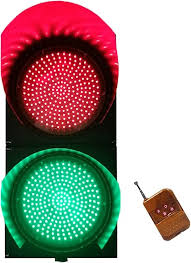
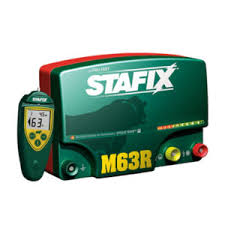





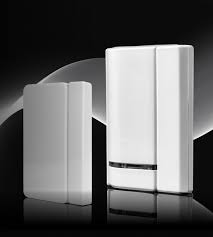
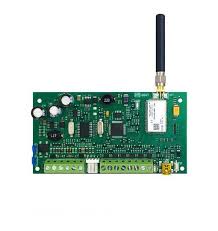
 No products in the cart.
No products in the cart. 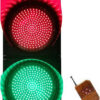
Reviews
There are no reviews yet.